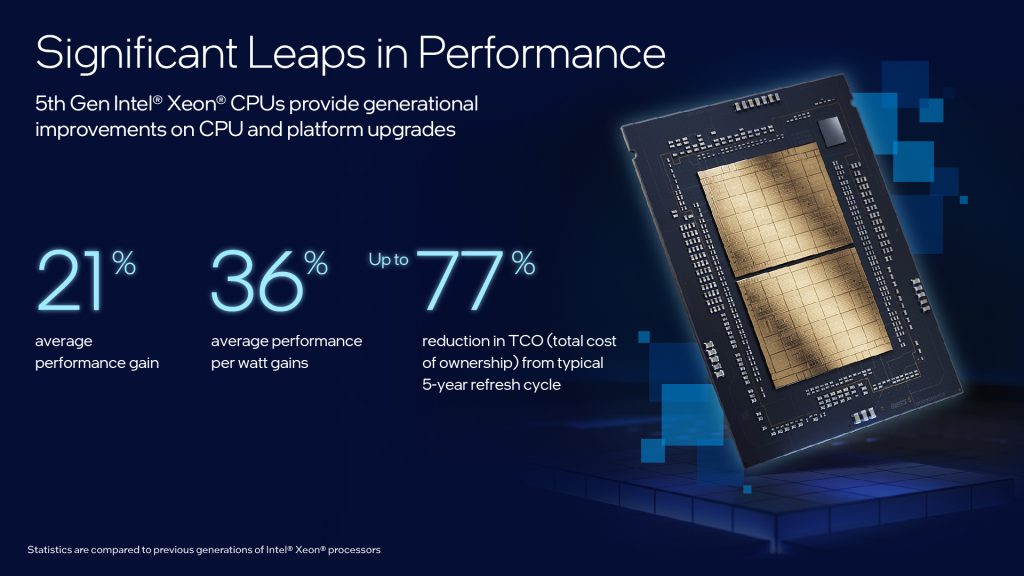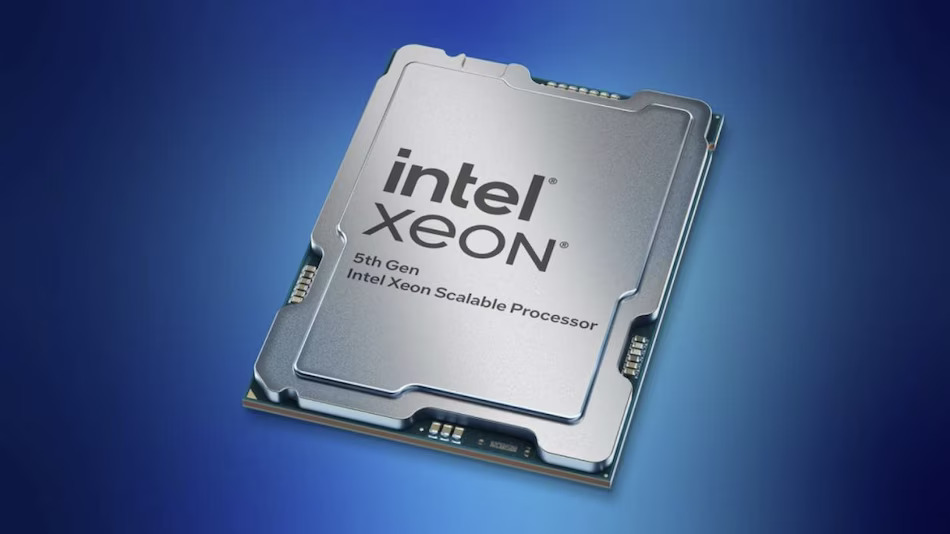Intel’s Core Ultra processors, designed for both laptops and desktop computers, enable PCs to directly handle AI functions.
Intel, a big player in computer chips, has launched new chips for PCs and data centers. They want a bigger share of the AI hardware market. The updated Xeon server chips use less power, boost performance, and handle memory better. Intel’s Ultra Core chips for laptops and desktops let PCs directly handle AI tasks.
One notable release is Gaudi 3, competing with Nvidia’s H100. These chips, called AI accelerators, help make things like chatbots. Intel says Gaudi 3, coming in 2024, will outperform H100, showing Intel’s commitment to staying competitive in AI hardware.
Intel’s shares surged by up to 5.6% in New York trading after the announcement, surpassing the 3.1% gain of the Philadelphia Stock Exchange Semiconductor Index. CEO Pat Gelsinger is banking on AI features to rejuvenate growth at Intel, which has faced challenges from past mistakes and a decline in the PC market. However, Gelsinger is up against formidable competition, with AMD gaining market share in PCs and servers, and some of Intel’s major customers now developing their own chips internally.
Simultaneously, Nvidia has emerged as a dominant player in data center chips through its AI accelerators. These products have driven substantial sales growth, pushing Nvidia’s valuation beyond $1.1 trillion. Analysts predict that Nvidia is set to surpass Intel in total revenue this year, marking a significant shift in the industry. Intel, once the largest chipmaker globally, now faces formidable competition from Nvidia.
AMD is also striving to catch up with Nvidia in the realm of AI accelerators. Their upcoming product, the MI300, is set to be introduced next year. AMD recently showcased the chip at an event, emphasizing that the market for AI accelerators is anticipated to surpass $400 billion in the next four years.
Intel aims to advance in AI processing by decentralizing it to devices rather than relying solely on data centers. The newly introduced Ultra Core chips, designed for this purpose, will feature in around 230 PC models from manufacturers like Dell Technologies and Samsung Electronics, becoming available as early as Thursday.
This development marks a significant stride for Intel in shaping the future of AI processing. As the AI industry shifts from primarily developing chatbots and services through training processes, there’s an emerging focus on executing completed software. In this evolving landscape, Intel’s Xeon processors in data centers and PC chips are poised to play pivotal roles.

“At an event in New York, Gelsinger conveyed that while a few individuals create models, a multitude of people utilizes them. Due to the considerable expenses associated with data centers, AI will increasingly be managed by PCs and other devices. Gelsinger also highlighted the limitations of sending data over the internet, emphasizing its impact on system responsiveness.”
But running AI software on a laptop can quickly drain the battery. To mitigate that risk, the new Core parts will run more efficiently and — in their highest-end configuration — provide more than 10 hours of life even during the most demanding tasks, Intel said.
Intel is set to enhance its Xeon range with new components, providing a 42 percent improvement in running AI-related workloads compared to the previous generation launched in January 2023. The overall performance per watt of electricity is expected to increase by 36 percent, showcasing Intel’s commitment to advancing product releases. Additionally, more versions of the Xeon line are slated for release in the first half of the upcoming year, further contributing to Intel’s accelerated product rollout strategy.
Gelsinger is on a mission to rejuvenate the company and propel it back to the forefront of the semiconductor industry, anticipating a growth to a trillion dollars in sales by the decade’s end. Reassuring the audience, he confidently stated on Thursday that his comeback plan is gaining traction and yielding positive results.
“We’re going to do a decade of semiconductor work in four years,” he said. “That’s pretty crazy. We’re on track, baby.”
